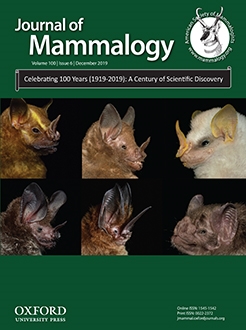A set of 182 populations of 76 mammal species in the United States and Canada, examined in natural conditions with minimized disturbances or management effects, shows that responses to climate change include negative responses, such as elevational range contractions, upward shifts and decreases in abundance, positive responses, such as range expansions, and no detectable responses. Responses vary among and within mammal species but many are correlated with species traits, particularly the responses linked to high extinction risks (= climate change risk: decreases in population sizes, range contractions, local extirpations). The traits showing the strongest links to differential responses to climate change are 1) body size—large mammals respond more often and most negatively to climate change, 2) activity times—few mammals with flexible active times respond to climate change, and 3) spatial distribution—high-latitude and high-elevation mammals responded more often to climate change. Using these traits and two approaches to trait weighting, I modeled the relative climate change risk for all 328 terrestrial, nonvolant mammal species in the United States and Canada across 10 levels of risk (low = 1–2, moderate = 3–4, moderate-high = 5–6, high = 7–8, very high = 9–10). The models predicted that 15% of these mammalian species are in the high- and very high-risk categories, including species from most orders. Many mammal populations and species listed as of conservation concern due to other human impacts by national or international agencies are also predicted by my models to be in the higher categories of climate change risk. My intention for these models is to clarify for managers and researchers which, where, and how mammals are responding to climate change relatively independent of other anthropogenic stressors (e.g., large-scale habitat change, overhunting) and to provide a preliminary assessment of species most in need of careful monitoring for climate change impacts.
How to translate text using browser tools
7 November 2019
Assessing the risks to United States and Canadian mammals caused by climate change using a trait-mediated model
Christy M. Mccain
ACCESS THE FULL ARTICLE

Journal of Mammalogy
Vol. 100 • No. 6
December 2019
Vol. 100 • No. 6
December 2019
activity times
body size
conservation
environmental change
global warming
predictive modeling
traits




